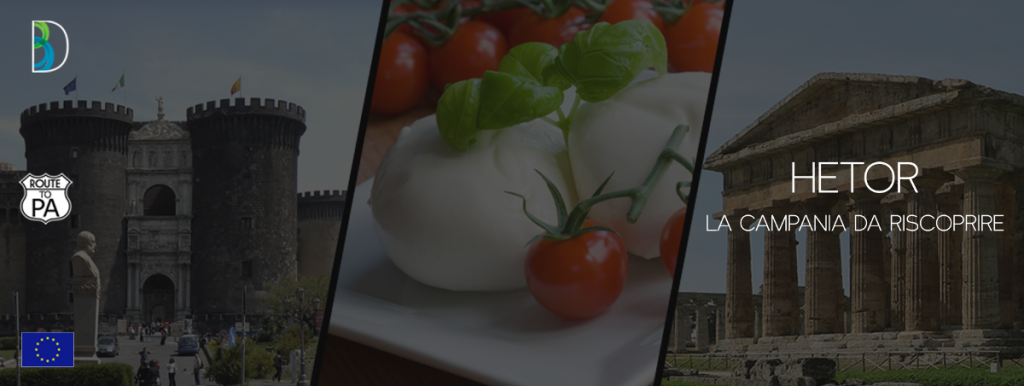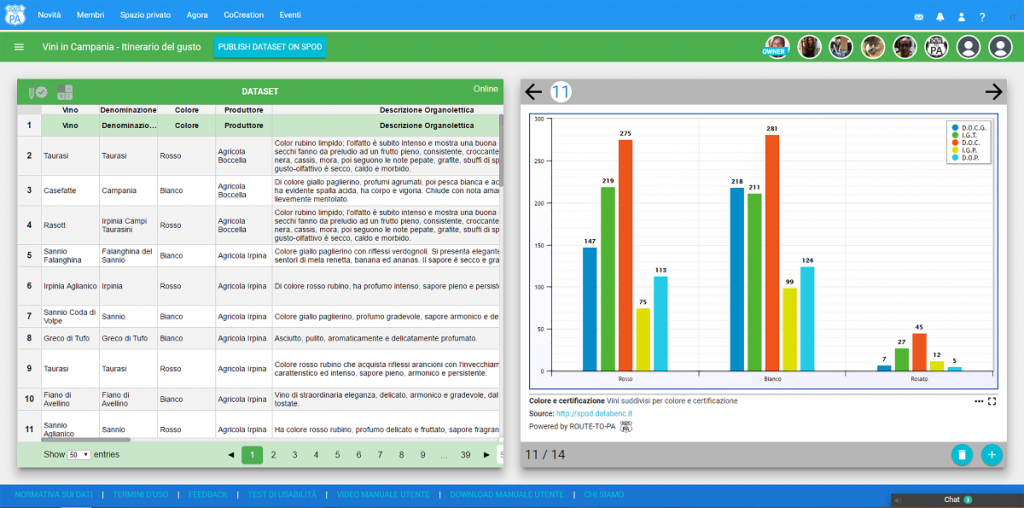Since 2015 Open Knowledge International has been part of the consortium of RouteToPA, a European innovation project aimed at improving citizen engagement by enabling meaningful interaction between open data users, open data publishers and open data. In the ROUTETOPA case study series, we shine a light on public administrations, organizations and communities that have adopted and are using ROUTETOPA tools for work and discussions around open data.

This case study narrative was written by Hetor Pilot’s Carmen Luciano, Vanja Annunziata, Maria Anna Ambrosino and Gianluca Santangelo and has been reposted from the RouteToPA website.
Italy has a long cultural tradition and the Campania region in particular is a territory that has a huge number of worthy local resources. Campania region’s cultural heritage must be preserved and promoted: first, by public administrations, but also by citizens. Unfortunately, these actions become more and more arduous, especially in a society totally oriented to the technological world, in which people are no more interested in “old things”.
The Hetor project was born with the aim of “revealing Campania cultural heritage essence via open data power”, combining cultural heritage with new technologies. The project is part of the initiatives organized by the DATABENC Technological district (High Technology Consortium for Cultural Heritage) within the EU H2020 ROUTE-TO-PA Project, and it is based on the creation and accessibility of knowledge concerning Campania cultural heritage.
The term Hetor (‘heart’ in greek) is connected to the principle of ‘truth’, meaning a shared and participatory construction of knowledge. The project aims to motivate and engage public administrations, local communities and schools in co-producing open data to enhance the local cultural heritage.
Therefore, we have created a website for open data concerning the cultural heritage of the Campania region, which contains official data from national institutions, such as ISTAT, MIBACT, MIUR and Campania Region.
The project is even more ambitious: by logging in to Hetor’s Social Platform for Open Data (SPOD) citizens can hold discussions, using free licensed data that’s available for use all over the world, in addition to data collected on the project repository. They can also co-create contents related to their town, enhancing their local cultural heritage.

To reach these goals, the project follows two main directions:
- Reuse of data, via various formats (images, GIF, articles) in order to spread the information collected within the datasets on SPOD;
- Spreading of data, via a specific communication strategy that uses two main ways of communication, the Hetor Facebook page and the Hetor blog .
The initial activities of the project involved a group of trainees undertaking their ICT Masters program for in “Cultural Heritage Information System” at DATABENC. They produced 8 datasets about the Cultural Heritage resources of Campania Region, including material and immaterial resources, in order to facilitate the creation of touristic itineraries to promote the territory.
In the second phase, students have been involved in the project, in particular 4 schools located in the provinces of Salerno, Avellino and Caserta. At the end of the activities, conducted within the ‘School-to-work transition programme’, students have produced 19 datasets about their local resources, both tangible and intangible ones. Communities also collaborated with the project: two groups of citizens in particular, in the province of Salerno, produced two datasets related to their territory.
The power of the Hetor Project lies in the combination of cultural heritage with ICT: the open data collected on SPOD are the means to promote and enhance the territory. Currently they concern the Campania region, but that could be implemented to the national level with citizen’s participation. Everyone can join us, co-creating data in order to enhance their own town, revealing information that even native citizens did not know before! To stay updated on Hetor’s future work, you can read more on this blog and follow updates via Facebook.
The ROUTE-TO-PA project – Raising Open and User-friendly Transparency-Enabling Technologies fOr Public Administrations – aims at improving the engagement of citizens by making them able to socially interact over open data, by forming or joining existing online communities that share common interest and discuss common issues.









The power of the Hetor Project lies in the combination of cultural heritage with ICT